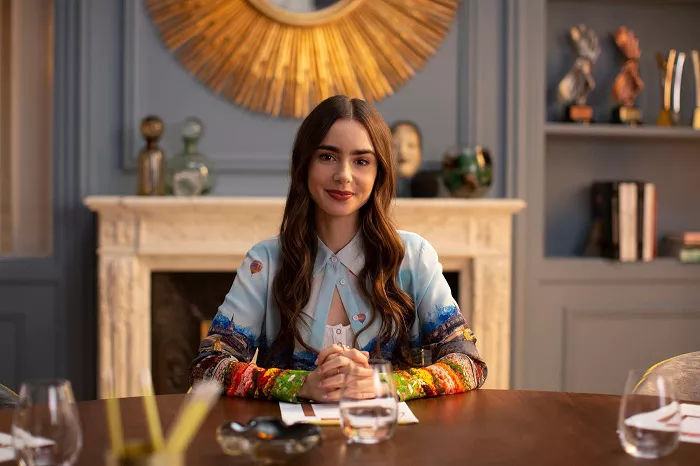The latest season of Netflix’s hit series Emily in Paris has taken product placement to a new level by prominently featuring brands such as Lidl, AMI, Samsung, Jacquemus, Vestiaire Collective, LVMH, and Google. This season’s integration of commercial brands is so pronounced that it has become a central aspect of the storyline.
In a groundbreaking move, the show collaborated with Google to offer viewers a unique way to shop for the outfits and accessories worn by the characters. By using Google Lens to scan images of their screens, viewers are directed to online retailers where they can purchase the same items. This innovative approach has significantly increased referral traffic and generated substantial commissions for Netflix.
Typically, French regulations limit product placement and covert advertising on television. However, these restrictions do not apply to streaming platforms, allowing Emily in Paris to incorporate brands more freely.
Jean Dominique Bourgeois, director of Place to Be Media, a French agency that specializes in product placements, commented, “Embedding brands from the start of the script is a novel approach in France, but it’s standard practice in the American market where early integration and large financial commitments are common.”
Bourgeois added that with budgets for scripted placements ranging from 500,000 to one million euros, this strategy offers a cost-effective alternative to traditional multinational campaigns. His agency played a key role in securing collaborations between Emily in Paris and brands like McDonald’s in season three, and it has arranged placements for three more clients in season four.
New Brand Collaborations
The second-hand luxury fashion platform Vestiaire Collective made a notable appearance this season. In a scene featuring Mindy, Emily’s financially struggling best friend, the character uses Vestiaire Collective to sell her designer clothes. Although financial details of this collaboration were not disclosed, the company aims to boost its visibility, especially in the American market, which represents 20% of its sales.
The platform, which also curated 900 pieces inspired by Emily’s wardrobe, has seen an increase in new customers, both buyers and sellers, following its feature on the show.
Bold Fashion Choices
Emily in Paris continues to be known for its bold and whimsical fashion choices. From the revival of the Kangol bucket hat in season one to the vibrant yellow outfits in season two, and the striped jumpsuit and fluffy blue hat in season four, the show’s costumes are a significant part of its appeal.
Marilyn Fitoussi, the show’s costume designer, is known for her striking fashion choices. She aims to create outfits that “make eyes bleed,” turning Emily’s wardrobe into a character of its own. Fitoussi revealed in an interview with French economic journal Les Échos that she receives frequent inquiries from brands looking to enhance their visibility and connect with younger audiences.
“I do not accept payment from brands and prefer not to,” Fitoussi said, recalling how budget constraints during the first season led her to dress Emily in second-hand and vintage clothing.
Each outfit on the show is now scrutinized by fashion critics, akin to a runway show. The presence of luxury brand logos, such as a Louis Vuitton belt buckle or sportswear during Emily’s jogging scenes, indicates a carefully planned visual strategy.
Adam Sanchez, a journalist for GQ, described watching the show as “like wandering through an enormous shopping mall,” highlighting the show’s strong commercial focus. Sanchez noted that product placement has “wildly escalated” by the fourth season, with multiple brand integrations featured prominently from the very beginning. He concluded that the show emphasizes consumerism and fashion over narrative depth, providing viewers with a unique, brand-focused viewing experience.
Related topics:
- Tory Burch Showcases Sport-Inspired Collection At New York Fashion Week
- Coofandy’s 2025 Spring-Summer Collection Celebrates Minimalism At NYFW
- Tokyo Fashion Week: A Celebration Of Emerging Talent Amid Global Challenges

